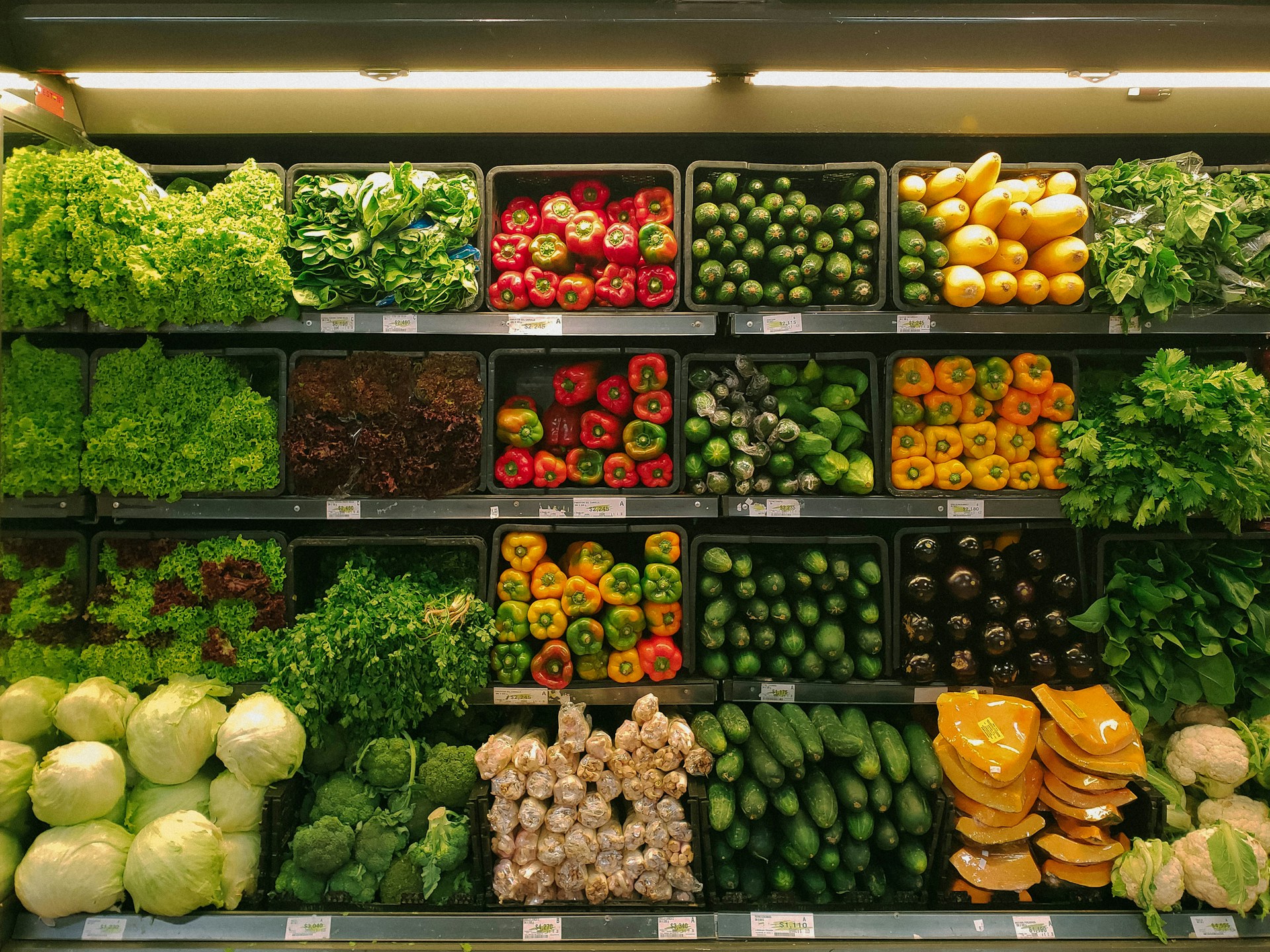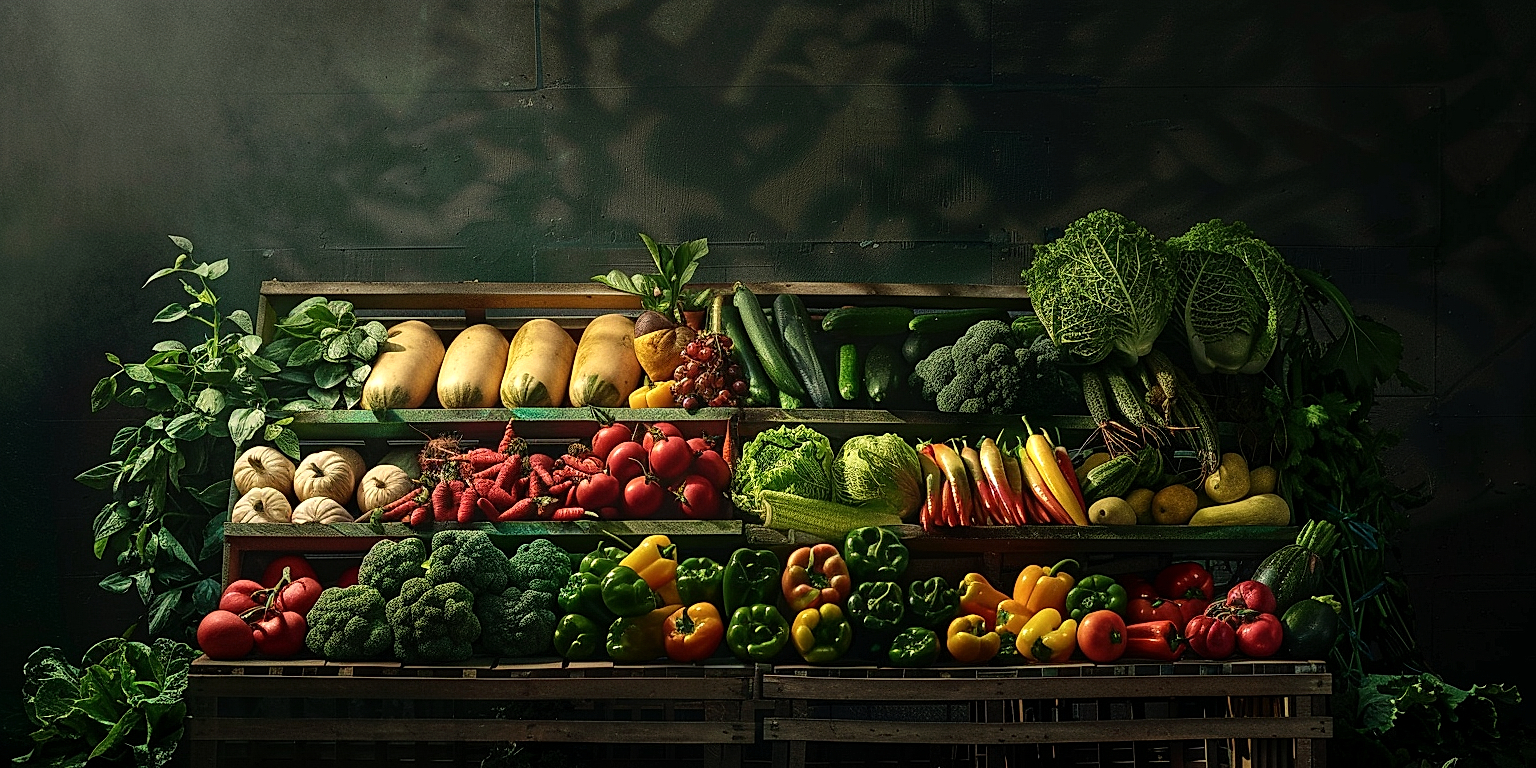In today’s turbulent market landscape, retailers are constantly grappling with ways to stand out.
An effective approach to this challenge is through the design and implementation of potent branding elements.
Retail branding, particularly in the produce industry, plays an integral role in shaping consumer preference and driving customer loyalty.
It has the power to trigger an emotional response from potential buyers, influencing their purchasing decisions profoundly.
Understanding and capitalizing on these key branding aspects is fundamental for any retailer aspiring for growth and profitability.
In this article, we delve into these instrumental factors and discuss innovative strategies to make your branding more appealing to customers.
Produce Retail Branding Elements That Attract More Customers
1. Eye-Catching Logo and Brand Name
An eye-catching logo is a pivotal component of a successful retail branding strategy targeted at attracting more customers.
At the mention of popular retail brands, their well-recognized logos all too often come to mind instantaneously, indicating how essential a potent, memorable logo is.
Attention to logo design is crucial because it’s not just a casual sketch but the visual representation of your brand identity.
That said, it is vital that your logo embodies the brand’s personality and values, delivering a subliminal message to your prospects in a glance.
As such, an effective logo should be simple yet creative and distinctive enough to set your retail brand apart in the noisey marketplace.
Amid your logo’s elements like colors, shapes, typography, it’s imperative to maintain consistency as that aids recognition and recall.
Remember, famed logos from lauded brands all feature persistent elements that hardly change across decades.
Just as important as your logo in your retail branding is your brand name.
The name of your brand has a considerable role to play in your potential customers’ perception of it.
An excellent brand name should be catchy, easy to remember, and symbolizes the brand’s essence and offerings.
Your brand name should be memorable and leave a lasting impression, thereby facilitating word-of-mouth marketing.
In selecting your brand name, avoid complex jargon or lengthy, difficult-to-pronounce words that could result in cognitive stress to your audience.
Simplicity in your brand name can contribute immensely to quick recognition and easy recall, helping your brand outstand in a packed marketplace.
After all, the major purpose of your brand name, like your logo, is to differentiate your offerings in consumers’ minds, giving them reasons to choose you over countless alternatives.
Authenticity is another element that your brand name should reflect.
Lastly, your brand name should be versatile enough to accommodate any adjustments or expansions your retail brand might undertake in the future.
2. High Quality Product Images
The importance of high-quality product images can never be overstated when we talk about branding and attracting customers in the realm of produce retail.
It is through your product images that potential customers get their first concrete impression of what you have to offer.
In a world where physical shopping continues to lose its grip, your customer mainly relies on images to make a buying decision.
Bearing in mind that the human brain processes visual input significantly faster than textual information, the quality of your images directly influences a customer’s decision to engage further or move along.
Given this reality, investing in professional, clean, and appealing product photography is not an option but a necessity, regardless of the size of your produce retail venture.
A high-resolution image that captures your product in its best light can make all the difference in guiding the prospective customer one step closer to a purchase.
Moreover, a quality image also conveys the impression of a reputable and reliable brand, building customer trust over time.
Be sure to include images that showcase your product from various angles, providing a holistic view and leaving no room for ambiguity.
This eliminates potential confusion and assures the customer that there will be no surprises regarding the product when it finally arrives at their doorstep.
It is also essential to be consistent with excellent product imagery across all your branding elements- website, brochures, social media accounts, and any other customer touchpoints. Consistency is key to establishing a strong brand identity.
Another significant aspect is the background of your images. A minimalist, uniform background, preferably white or light-coloured, not only enhances product visibility but also lends a sleek, professional look to your entire catalogue.
Where possible, including images of the product in use can also be beneficial – they not only demonstrate utility but also evoke a sense of lifestyle aspiration in potential customers, reinforcing the potential value of the product.
Lastly, while we are heavily emphasizing the importance of quality images, it does not mean that the product description should be overlooked.
In fact, a complete and accurate product description, coupled with an appealing, high-quality image, forms a power-packed duo that significantly increases your chances of conversion.
In summary, when it comes to attracting more customers to your brand, the power of well-executed, high-quality product images cannot be ignored, and brands should dedicate considerable time and resources toward building a visually stunning, consistent, and highly appealing product image catalogue.
3. Clear and Unique Selling Proposition
A clear and unique selling proposition is one of the essential retail branding elements that can attract more customers to your produce market.
Customers today have several options available when it comes to where to purchase their fruits and vegetables.
What sets your store apart from the rest, is having a clear and unique selling proposition that they can’t resist.
This selling proposition can serve as the heartbeat of your brand, and it is what customers will remember.
In today’s marketplace, it’s not enough to just sell high-quality produce.
You must also communicate why your produce brand is unique and why shoppers should choose you over competitors.
Your unique selling proposition should be easily digestible and memorable for the customer, it should be something that sticks to their mind after they leave the store.
This could be a unique guarantee that you offer, or perhaps a special service that other stores don’t.
Another important thing to consider is to really know your audience and cater your unique selling proposition to them.
For example, if you cater to health-conscious customers, your unique selling proposition might be that all of your produce is locally sourced, promoting both freshness and sustainability.
Or if your audience values ethical sourcing and fair-trade practices, you could focus on these elements as your USP.
It’s important to remember that a good unique selling proposition addresses a specific need, problem, or desire that the customer has.
A clear and unique selling proposition not only differentiates your produce brand in the market, but it also gives customers a solid reason to choose your products over others.
Maintaining clarity in your unique selling proposition is very important to avoid any misunderstanding or confusion for the customers.
It should be a simple, clear statement that communicates exactly what your brand is all about.
Overall, having a clear and unique selling proposition can be the cornerstone of your branding strategy which could draw more customers and grow your business.
4. Exciting Promotions and Discounts
In the fiercely competitive world of retail, exciting promotions and discounts can be a game changer for your brand.
Economically, this tactic encourages customers to try out your products and spend more on each visit.
By using these tools strategically, they can help in clearing out inventory and making room for new stock.
Echoing the unique selling proposition in your promotions and discounts can make your campaign more effective and memorable.
Furthermore, when you align your promotions with your brand’s unique selling proposition (USP), you reinforce your brand positioning.
This way, consumers are not only tempted by the price cut, but they also get reminded of the unique benefits that your products offer.
One common approach is offering seasonal discounts, which can attract more shoppers during certain times of the year.
Special promotions tied to occasions like holidays, anniversaries, or storewide sales are also effective.
Another exciting promotion is the Buy More, Save More strategy, where customers get bigger discounts when they buy in bulk.
This not only incentivizes customers to buy more, but it also increases your average transaction value.
To make your promotions even more attractive, you can combine discounts with value-added services like free delivery, gift wrapping, or loyalty points.
Another key to successful promotion is consistency and repetition.
Consistent promotions reaffirm your commitment to value, while repetition helps keep your brand at the top of customers’ minds.
Promotions should be communicated clearly – through your website, social media, email newsletter, and in-store signage – so customers are well aware of the opportunities to save.
At the end of the day, exciting promotions are not just about discounts but also about creating a fun and rewarding shopping experience for your customers.
5. Authentic Customer Testimonials
There is no denying the power of authentic customer testimonials when it comes to influencing customer behavior.
This is because people trust the opinions of those who have already used the product more than they trust the brand’s own words.
Therefore, focusing on garnering authentic and positive testimonials from your customers is a key way to attract more customers to your produce retail brand.
Such testimonials act as social proof that your products are of high quality and worth purchasing.
To make your testimonials more effective, ensure they describe in detail the customer’s experience with your product .
They should not just be a generic compliment, but provide a tangible, relatable experience.
This way, potential customers can see the real-life benefit they can get from using your products.
Further, featuring your testimonials prominently on your website and other marketing channels can help amplify their effect.
Use a variety of formats: text, video, images, to appeal to different customer preferences and enhance the authenticity of the testimonies.
However, make sure that requests for testimonials are approached in a respectful manner, offering incentives or rewards for their time can be effective in encouraging customers to share their experiences.
When potential customers see other people, especially those that resemble them or their lifestyle, praising your product, it would be easier for them to trust your brand and more likely to try your product themselves.
Furthermore, regularly updating your testimonials can help keep your brand fresh and relevant.
Remember that authenticity is the key. Do not fabricate testimonials as consumers can often sense when they are not genuine and such a move can damage your brand greatly.
By leveraging the power of authentic customer testimonials, your produce retail brand can effectively boost its attractiveness and trust among potential customers, ultimately driving more sales.
6. Engaging Product Descriptions
The importance of engaging product descriptions in retail branding and attracting customers cannot be overstated.
These descriptions are a powerful tool for conveying the value of your products to potential customers.
In the retail world, products often speak for themselves, but a well-crafted description can amplify their appeal.
The essence of compelling product descriptions is to create a vivid image of the product in the customer’s mind, stirring their interest and nudging them closer to making a purchase.
However, writing engaging product descriptions requires more than just a list of product features.
It entails crafting a narrative that tells a story about the product, providing a context in which the customer can see themselves using the product.
Furthermore, descriptions should be tailored to resonate with your target audience, captivating their interest and addressing their pain points or needs.
It’s also crucial to highlight the benefits of the product- not merely its features, as benefits hold more appeal to customers.
They want to know ‘what’s in it for me?’ so be sure to answer this question emphatically.
To make your descriptions more engaging, consider using sensory words that appeal to the five senses, fostering a more intimate, immersive experience.
This encourages customers to engage more deeply with the product, increasing the likelihood of purchase.
Around the succinct yet detailed product information, weave in elements of your brand’s personality.
This not only makes the description more engaging but also enhances consistency in your brand communication.
Lastly, engagement doesn’t end at the product description itself.
A well-optimized product description also considers SEO, incorporating relevant keywords to help your products appear in search results.
This, in turn, increases visibility, drives traffic to your product pages, and ultimately, attracts more customers.
Remember, while creating engaging product descriptions can be a challenging task, it’s a pivotal retail branding element that can be tremendously profitable when done right.
7. Sustainable and Ethical Brand Practices
When focusing on retail branding elements that can attract more customers to your produce retail business, paying attention to sustainable and ethical brand practices is a must.
Today’s consumers are increasingly informed and concerned about the environmental impact and ethical implications of the products they buy.
In fact, sustainability and ethics have become a key factor that influences the purchasing decision of many consumers.
For this reason, it is crucial to incorporate sustainability and ethical values into your brand’s image and practices.
This includes being transparent about your sourcing methods, labour practices, and commitment to reducing your carbon footprint.
Promote these elements in tandem with your quality products to entice a broader customer base.
Showcasing your commitment to the environment and fair labour practices can differentiate your brand in the crowded market.
Integrating sustainable and ethical practices into your business model and highlighting them in your brand’s messaging and visual identity reflects positively on your brand’s image, demonstrating a level of responsibility and care that can inspire trust and loyalty among consumers.
Utilizing eco-friendly packaging and marketing materials not only aligns with promoting sustainable practices but can also offer unique branding opportunities.
Eco-friendly products or organic produce is usually associated with quality and health-conscious decisions, creating a positive perception of your brand.
Showing the faces behind your business and sharing their stories can humanize your brand, strengthening its ethical credibility.
Inviting customers to be a part of your sustainability initiatives, like tree planting or beach cleanups, can provide a sense of community and shared values.
You can also share updates and achievements related to your company’s sustainability goals. This transparency could create a bond of trust with your customers, encouraging them to continue supporting your brand.
Finally, sustainability and ethical practices are not only for outward projection. They should be integral to your company culture and daily operations.
Employees who see that their organization genuinely cares about sustainability and ethical practices are likely to feel more engaged and motivated, creating a positive working environment that can translate into better customer service.
The Bottom Line
Balancing all facets of an online business can be intense, yet crucial to its success.
A memorable logo and brand name lay the foundation, while high-quality product photographs help attract and engage prospective customers.
Your unique selling proposition differentiates you in a crowded marketplace, and carefully timed promotions and discounts further entice shoppers.
Authentic customer testimonials boost credibility, and engaging product descriptions simplify the buying decision.
Lastly, adopting sustainable and ethical practices enhances your brand’s appeal to the growing demographic of conscious consumers.
In essence, each of these elements synergistically contributes to creating a compelling online store that reflects your brand’s identity, encourages customer loyalty and drives sales.




